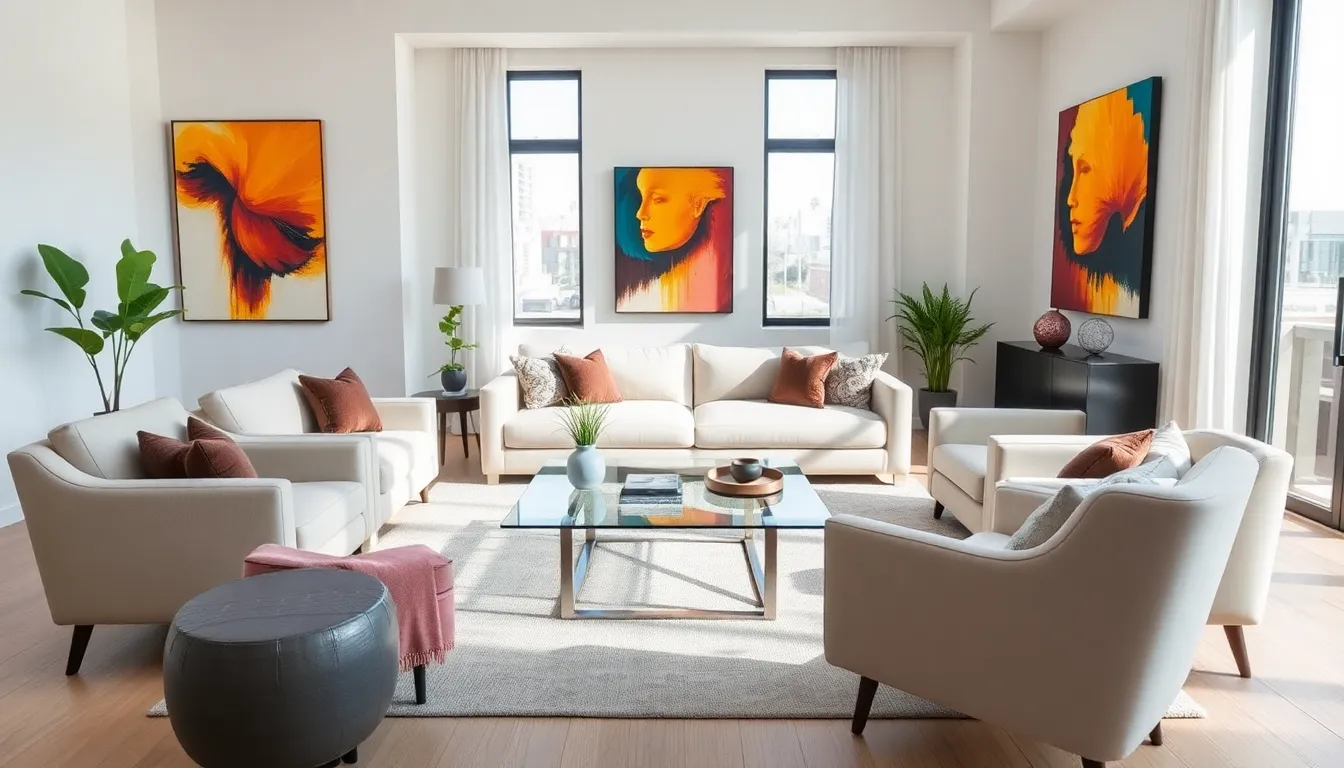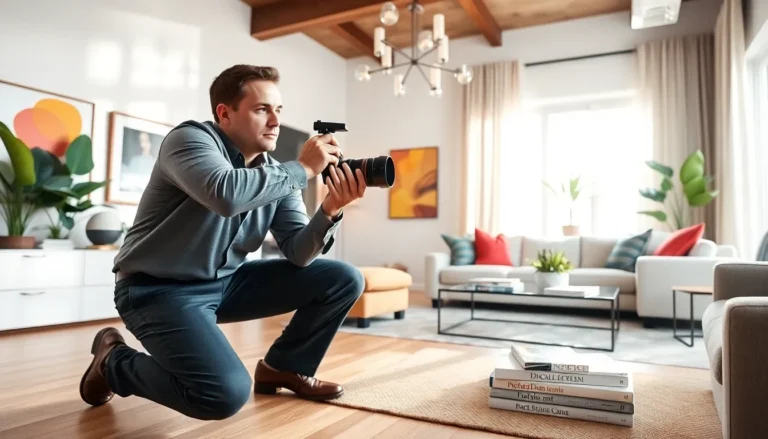Interior design residential isn’t just about picking the right curtains and arranging furniture to avoid tripping over the coffee table. Nope. It’s an art that blends function with aesthetics, creating spaces that not only look good but also feel good. Imagine walking into a room and instantly feeling at home, with every corner reflecting your personal style. This guide will help you navigate the world of residential interior design, making you the Picasso of your own home. Let’s immerse, laugh a little, and transform those four walls into a masterpiece.
Table of Contents
ToggleUnderstanding the Basics of Residential Interior Design

Key Principles of Interior Design
Understanding the fundamentals of interior design sets the stage for a successful transformation. The principles of balance, harmony, and proportion help to create a well-designed space. Balance can be symmetrical, where both sides mirror each other, or asymmetrical, creating a more dynamic look. Harmony is about ensuring that elements complement each other, while proportion relates to the size of objects in relation to one another. An understanding of these concepts is crucial as it allows for a pleasing environment that feels visually right.
The Importance of Space Planning
Space is more than just the area you occupy: it can significantly affect how a room feels and functions. Effective space planning entails analyzing the layout to maximize flow. It involves arranging furnishings in a way that facilitates movement and interaction. This planning stage is where function meets form. For instance, you wouldn’t want your living room to feel cramped, so positioning furniture for easy navigation is paramount.
Color Theory and Its Impact on Mood
Color is not just for aesthetics: it’s a powerful tool that can dramatically influence emotions. Different colors evoke different feelings, with blue promoting calmness, while reds can energize a space. Understanding color theory helps in choosing the right palette that not only enhances the look but also feels right for your mood. Have you ever noticed how a yellow room feels cheerful compared to a gray one? Color can shape the entire atmosphere of a home.
Elements of Design: Texture, Pattern, and Light
Choosing the Right Style for Your Home
When it comes to choosing an interior design style, the options are practically endless. Minimalist, bohemian, industrial, each invites a distinct character into your space. It’s vital to find a style that resonates with you. Take your time to explore different aesthetics and consider how they reflect your personality. Remember, it’s about creating an environment you truly enjoy living in.
Popular Interior Design Styles
Familiarize yourself with popular trends to find inspiration. For instance, modern design emphasizes clean lines and neutral palettes, while farmhouse design brings in warmth through natural materials. Alternatively, mid-century modern looks back to the 50s with vibrant colors and functional forms. Each style has components that can be mixed and matched, allowing for personal expression within your home.
Blending Styles for a Unique Look
Incorporating Functionality with Aesthetics
Design isn’t just about looks: functionality is paramount. Consider how you use your space and what elements will support your lifestyle. For example, if you have kids, your furniture choices should align with durability while still being stylish. Incorporating multi-functional pieces, like a coffee table with storage, can be a chic solution that enhances both aesthetics and practicality.
Maximizing Small Spaces
Living in a cozy apartment? No problem. There are numerous ways to optimize your space. Use vertical storage by decorating the walls with shelves or hooks. Mirrors can also create an illusion of depth, making the area appear larger. The key is to think creatively about how to arrange your furniture and decor, ensuring every inch serves a purpose.
Creating a Cohesive Look Throughout Your Home
Tips for Decorating Each Room
Consistency in design makes a home feel intentional, while yet allowing for uniqueness in each space. Start with a central theme or color palette that can be applied throughout the house. This could mean using similar materials or colors to create flow among rooms. Incorporate distinct elements in each room, allowing for individuality within the overarching theme.
Living Room Design Ideas
The living room is often the heart of the home. An inviting layout encourages social interaction, while appropriate lighting fosters the right mood. Layered lighting, combining ambient, task, and accent lights, can enhance the space. Sofa arrangements should encourage conversation, avoid placing all furniture against the walls. How about adding a cozy throw or an eye-catching piece of art for that wow factor?
Bedroom Retreats: Designing Comfort and Style
Creating a bedroom that feels like a personal retreat is essential. Focus on comfort with quality bedding and layers of textures. Gentle colors can promote relaxation, while accents like plants or personal photos can make the space homey. Remember to keep clutter at bay to ensure a serene environment. A well-designed bedroom becomes a sanctuary that promotes rest.
Kitchen and Dining Area Essentials
Choosing the Right Furniture and Accessories
Every kitchen needs the right fixtures and finishes, which can elevate style and function. When selecting furniture, consider pieces that are both practical and beautiful. Perhaps look for tables that can accommodate family dinners yet work for casual breakfasts. Accessories like plants, cookbooks, or stylish utensils can also contribute to the charm of this essential space.
Sustainable and Eco-Friendly Design Choices
In today’s world, sustainability is more important than ever. Opting for eco-friendly materials and practices is a win for your home and the planet. Consider reclaimed wood for shelves or energy-efficient appliances to reduce your carbon footprint. Even small changes, like using natural cleaning products, can enhance your home’s environment. Incorporating sustainability isn’t just responsible: it’s also a beautiful trend.



